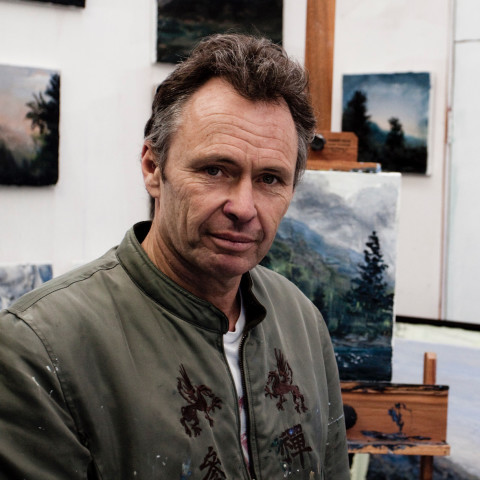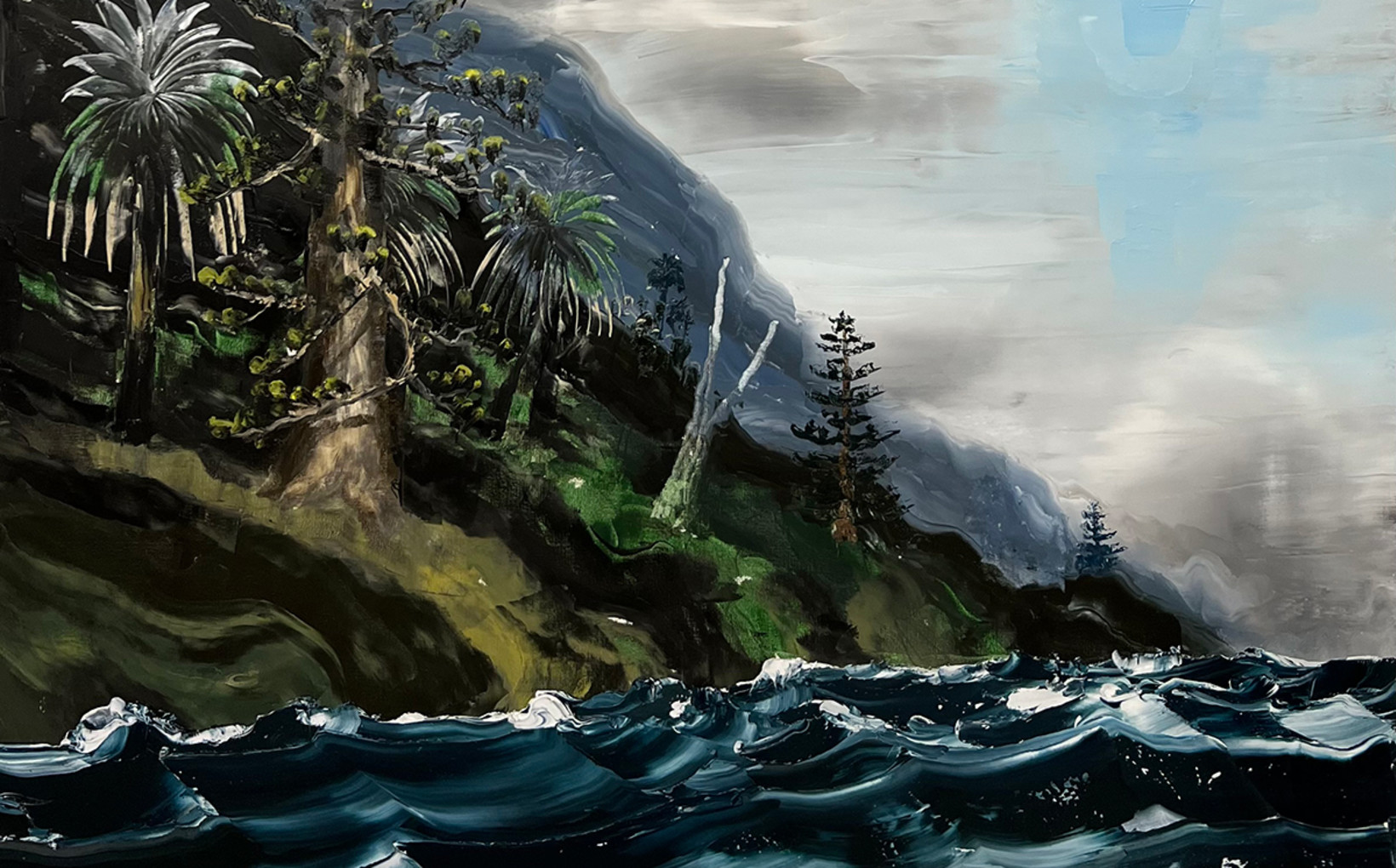
1964, Auckland
Lives and works in Thirroul, NSW

“Colonial art is the knack of rendering the new as old, the unknown as the known, the antipodean as European, the contemptible as the respectable.”1.
The European artists that sailed to the South Pacific in the 18th and 19th centuries were part of a migratory force that would change everything in the southern climes. They painted the original inhabitants, flora and fauna in a manner and methodology that befitted their overriding colonial societal and artistic ambitions. Science, literature, and painting morphed, creating an enlightened yet imperialist view of the new world. Exploring and recording, they would delve into the contemporary pictorial genres from the picturesque to the sublime. This was the landscape painting tradition, born from the idealised canvases of Claude Lorrain. Their painted record would provide a visual narrative that surreptitiously supported the expansion of Empire for the two centuries to come.
Throughout history, visual propaganda in its various guises is a curious phenomenon. From religious frescos of the Renaissance to contemporary fake news, those in power have used the image to underscore power and direct public opinion. The primary objective is to ultimately skew reality—with the alternative reality portrayed, becoming a controlling force.
Artist Paul Ryan lives and works north of Wollongong in Dharawal county. It is a dramatic place—the great Illawarra escarpment crashes into the breaking swells of the Pacific Ocean. The ever-changing light and weather patterns are apparent and integral to all who live there. It is the constant in Ryan’s oeuvre—from the tonality of his palette to the visual power of the swaths of oil that echo the power of the sea. Ryan has for decades navigated the landscape, drawing inhabitants from history and placing, or misplacing, them in his landscape. Politically charged with a wicked wit, his imaging of the sartorial elegant colonial interlopers—sardonically rendered in oil—has become a mainstay of contemporary Australian visual culture. There is, at times, a punk sensibility to this most serious of artists.
When considering the awkwardness of imaging colonial habitation, one is reminded of Benjamin Duterrau’s The Conciliation, 1840—arguably Australia’s first history painting. Almost comical in its naïve methodology, the benignly intended narrative of Christian good intention gives way to the reality of the traitorous decimation of the first Tasmanians from the wrong end of a musket.
The echoes of the past poignantly ricochet through The Island. Ryan’s nod to Francisco Goya becomes a rich vein for the artist, and is married with a newfound fascination for the Tasmanian gothic. The relevance of the stories of the southern island subliminally manifests in the naval blue tunics of Ryan’s protagonists as they stand prone and entrenched in a new land that is being manicured and imaged in the mind’s eye of the colonising explorer naturalist.
1. Flanagan, Richard. Gould’s Book of Fish; A Novel in Twelve Fish. p.78
Ralph Hobbs
October 2022
Your monthly art news on the run plus invitations to Nanda\Hobbs exhibitions and events